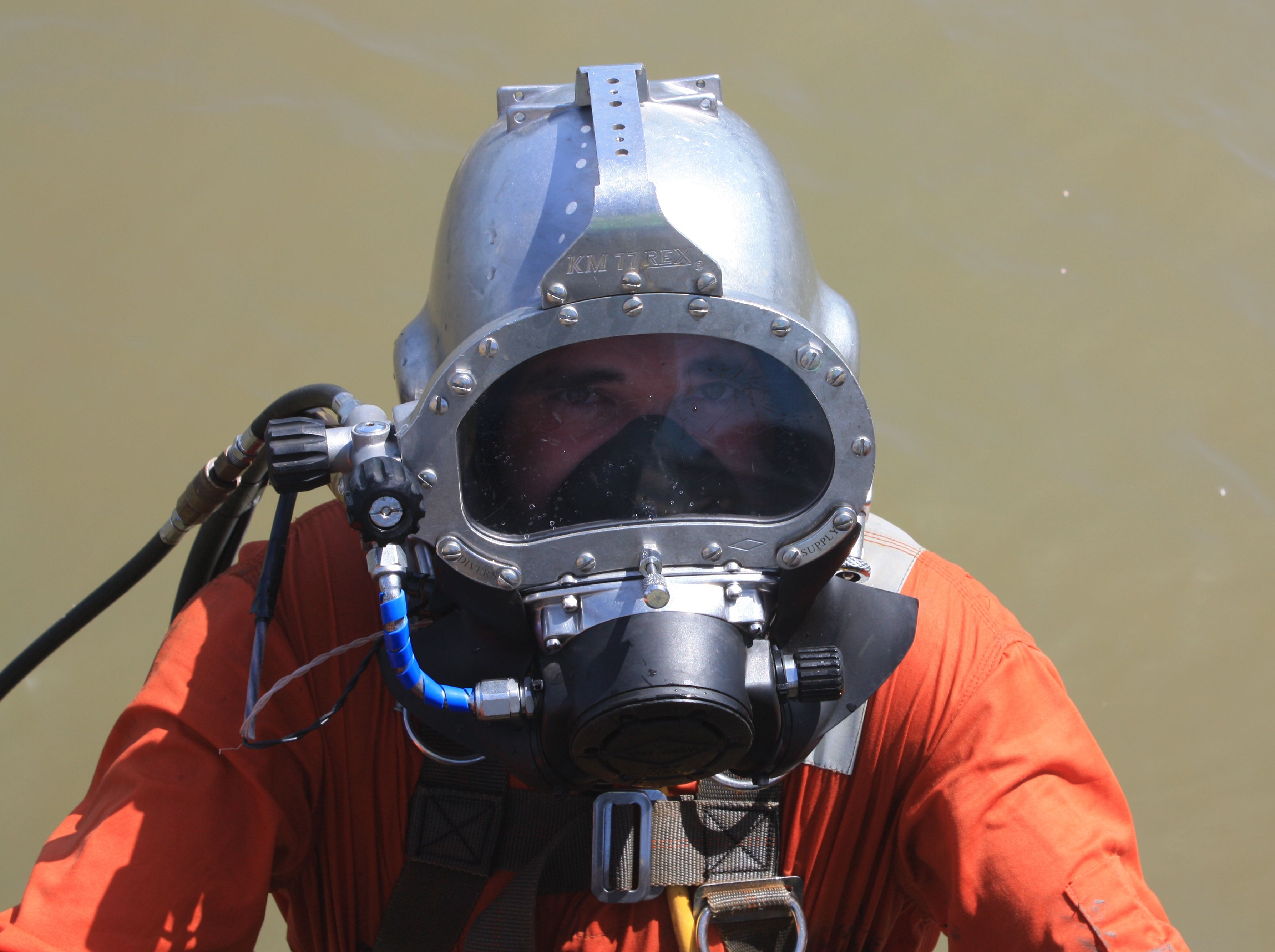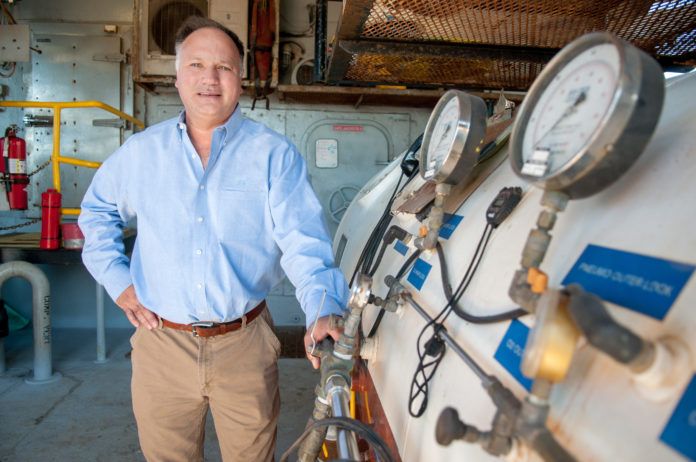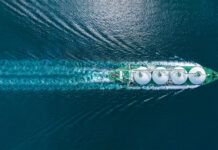Robbie Champagne is the founder of C-Dive, a Houma-based commercial diving company with 100 employees serving independent oil and gas producers in the Gulf of Mexico. When he got out of the Navy, he was looking for a career, preferably one that didn’t require him to sweat too much. Commercial diving seemed like a good fit.
“I liked diving, I liked the water, and, quite simply, it was the most money I could make with the amount of education that it took,” Champagne says.
Champagne is a 1992 graduate of South Central Louisiana Technical College’s commercial diving program, based at Young Memorial Campus in Morgan City. It’s the only commercial diving school between Texas and Florida. Champagne is an advisor to the faculty and one of the program’s biggest boosters.

THE BASICS
The program lasts about seven months. Tuition is $4,546 for students from Louisiana and $8,434 for everyone else. Most students are from outside the state—some from as far away as Nigeria, says Jerry Shepherd, one of the program’s two full-time instructors. Typically, about 24 students graduate per term, although demand has declined along with the oil industry’s downturn. About half of recent graduates work offshore.
INDUSTRY APPROPRIATE
Shepherd says he meets with an industry advisory committee twice a year. He lays out how he’s training the students and asks for feedback about what they’d like to see from his graduates. They might ask for more training on a certain piece of equipment, for example. “They tell me what they’re doing and how they’re doing it,” he says, “and I try to match my training techniques to their standards.”
THE RIGHT STUFF
The program requires a dive physical by a hyperbaric physician before admittance. Body weight, asthma, and certain blood pressure medications are among the factors that can prevent a prospective student from becoming a commercial diver. Typically, about two or three students out of 10 won’t graduate from the program, Shepherd says. The math and physics requirements often claim one person. The “dive medicine” coursework might take out another.
STILL IN DEMAND
Despite the offshore slowdown, there’s plenty of work for commercial divers. Pretty much anything that touches water–from dams to bridges to water towers–must be maintained by divers. “My students have no problems finding employment,” Shepherd says. “I constantly have the dive companies calling me, asking ‘When are your students graduating?’” Some have said they’d hire an entire class as soon as they’re ready, he says.
This article was originally published in the fourth quarter 2017 edition of 10/12 Industry Report.








